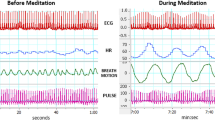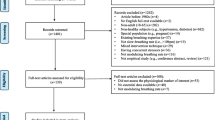Abstract.
Although the concept of transfer function is intrinsically related to an input–output relationship, the traditional and widely used estimation method merges both feedback and feedforward interactions between the two analyzed signals. This limitation may endanger the reliability of transfer function analysis in biological systems characterized by closed loop interactions. In this study, a method for estimating the transfer function between closed loop interacting signals was proposed and validated in the field of cardiovascular and cardiorespiratory variability. The two analyzed signals x and y were described by a bivariate autoregressive model, and the causal transfer function from x to y was estimated after imposing causality by setting to zero the model coefficients representative of the reverse effects from y to x. The method was tested in simulations reproducing linear open and closed loop interactions, showing a better adherence of the causal transfer function to the theoretical curves with respect to the traditional approach in presence of non-negligible reverse effects. It was then applied in ten healthy young subjects to characterize the transfer functions from respiration to heart period (RR interval) and to systolic arterial pressure (SAP), and from SAP to RR interval. In the first two cases, the causal and non-causal transfer function estimates were comparable, indicating that respiration, acting as exogenous signal, sets an open loop relationship upon SAP and RR interval. On the contrary, causal and traditional transfer functions from SAP to RR were significantly different, suggesting the presence of a considerable influence on the opposite causal direction. Thus, the proposed causal approach seems to be appropriate for the estimation of parameters, like the gain and the phase lag from SAP to RR interval, which have a large clinical and physiological relevance.
Similar content being viewed by others
References
Akaike H (1974) A new look at the statistical model identification. IEEE Trans Autom Contr 19:716–723
Baselli G, Cerutti S, Civardi S, Liberati D, Lombardi F, Malliani A, Pagani M (1986) Spectral and cross-spectral analysis of heart rate and arterial blood pressure variability signals. Comput Biomed Res 19:520–534
Baselli G, Porta A, Rimoldi O, Pagani M, Cerutti S (1997) Spectral decomposition in multichannel recordings based on multivariate parametric identification. IEEE Trans Biomed Eng 44:1092–1101
Bendat JS, Piersol AG (1986) Random data. Wiley, New York
Cooke WH, Hoag JB, Crossman AA, Kuusela TA, Tahvanainen KUO, Eckberg DL (1999) Human response to upright tilt: a window on central autonomic integration. J Physiol 517:617–628
de Boer RW, Karemaker JM, Strackee J (1985) Relationships between short-term blood-pressure fluctuations and heart-rate variability in resting subjects: a spectral analysis approach. Med Biol Eng Comput 23:352–358
de Boer RW, Karemaker JM, Strackee J (1987) Hemodynamic fluctuations and baroreflex sensitivity in humans: a beat-to-beat model. Am J Physiol 253:H680–H689
Faes L, Nollo G, Antolini R (2002) Experimental approach for testing the uncoupling between cardiovascular variability series. Med Biol Eng Comput 40:565–570
Faes L, Pinna GD, Porta A, Maestri R, Nollo G (2004) Surr- ogate data analysis for assessing the significance of the coherence function. IEEE Trans Biomed Eng 51:1156–1166
Hirsch JA, Bishop B (1981) Respiratory sinus arrhythmia in humans: how breathing pattern modulates heart rate. Am J Physiol 241:H620-H629
Hoyer D, Bauer R, Walter B, Zwiener U (1998) Estimation of nonlinear couplings on the basis of complexity and predictability –- a new method applied to cardiorespiratory coordination. IEEE Trans Biomed Eng 45:545–552
Kay SM (1988) Modern spectral estimation. Theory and application. Prentice Hall, Englewood Cliffs
Koepchen HP (1984) History of studies and concepts of blood pressure waves. In: Miyakawa K, Polosa C, Koepchen HP (eds) Mechanisms of blood pressure waves. Springer, Berlin Heidelberg New York, pp 3–23
Legramante JM, Raimondi G, Massaro M, Iellamo F (2001) Positive and negative feedback mechanisms in the neural regulation of cardiovascular function in healthy and spinal cord-injured humans. Circulation 103:1250–1255
Nollo G, Porta A, Faes L, Del Greco M, Disertori M, Ravelli F (2001) Causal linear parametric model for baroreflex gain assessment in patients with recent myocardial infarction. Am J Physiol Heart Circ Physiol 280:H1830–H1839
Nollo G, Faes L, Porta A, Pellegrini B, Ravelli F, Del Greco M, Disertori M, Antolini R (2002) Evidence of unbalanced regulatory mechanism of heart rate and systolic pressure after acute myocardial infarction. Am J Physiol Heart Circ Physiol 283:H1200-H1207
Oppenheim AV, Schafer RW (1975) Digital signal processing. Prentice-Hall, Englewood Cliffs
Pagani M, Lombardi F, Guzzetti S, Rimoldi O, Furlan R, Pizzinelli P, Sandrone G, Malfatto G, Dell’Orto S, Piccaluga E, Turiel M, Baselli G, Cerutti S, Malliani A (1986) Power spectral analysis of heart rate and arterial pressure variabilities as a marker of sympatho-vagal interaction in man and conscious dog. Circ Res 59:178–193
Palus M (1997) Detecting phase synchronization in noisy systems. Phys Lett A 235:341–351
Pinna GD, Maestri R (2001) Reliability of transfer function estimates in cardiovascular variability analysis. Med Biol Eng Comput 39:338–347
Pinna GD, Maestri R, Raczak G, La Rovere MT (2002) Measuring baroreflex sensitivity from the gain function between arterial pressure and heart period. Clin Sci (Lond) 103:81–88
Pitzalis MV, Mastropasqua F, Massari F, Passantino A, Colombo R, Mannarini A, Forleo C, Rizzon P (1998) Effect of respiratory rate on the relationships between RR interval and systolic blood pressure fluctuations: a frequency-dependent phenomenon. Cardiovasc Res 38:332–339
Porta A, Baselli G, Lombardi F, Montano N, Malliani A, Cerutti S (1999) Conditional entropy approach for the evaluation of the coupling strength. Biol Cybern 81:119–129
Porta A, Baselli G, Rimoldi O, Malliani A, Pagani M (2000) Assessing baroreflex gain from spontaneous variability in conscious dogs: role of causality and respiration. Am J Physiol 279:H2558-H2567
Porta A, Furlan R, Rimoldi O, Pagani M, Malliani A, van de Borne P (2002) Quantifying the strength of the linear causal coupling in closed loop interacting cardiovascular variability signals. Biol Cybern 86:241–251
Priestley MB (1981) Spectral analysis and time series. Academic, London
Robbe HWJ, Mulder LJM, Ruddel H, Langewitz WA, Veldman JBP, Mulder G (1987) Assessment of baroreceptor reflex sensitivity by means of spectral analysis. Hypertension 10:538–543
Saul JP, Berger RD, Chen MH, Cohen RJ (1989) Transfer function analysis of autonomic regulation. II. Respiratory sinus arrhythmia. Am J Physiol 256:H153-H161
Saul JP, Berger RD, Albrecht P, Stein SP, Hui Chen M, Cohen RJ (1991) Transfer function analysis of the circulation: unique insights into cardiovascular regulation. Am J Physiol 261:H1231-H1245
Schafer C, Rosenblum MG, Kurths J, Abel HH (1998) Heartbeat synchronized with ventilation. Nature 392:239–240
Taylor JA, Eckberg DL (1996) Fundamental relations between short-term RR interval and arterial pressure oscillations in humans. Circulation 93:1527–1532
Wichterle D, Melenovsky V, Simek J, Necasova L, Kautzner J, Malik M (2000) Cross-spectral analysis of heart rate and blood pressure modulations. PACE 23:1425–1430
Author information
Authors and Affiliations
Corresponding author
Rights and permissions
About this article
Cite this article
Faes, L., Porta, A., Cucino, R. et al. Causal transfer function analysis to describe closed loop interactions between cardiovascular and cardiorespiratory variability signals. Biol. Cybern. 90, 390–399 (2004). https://doi.org/10.1007/s00422-004-0488-0
Received:
Accepted:
Published:
Issue Date:
DOI: https://doi.org/10.1007/s00422-004-0488-0




